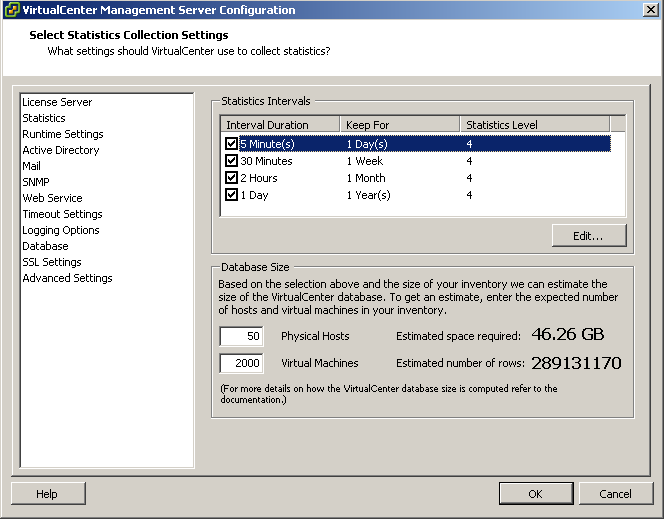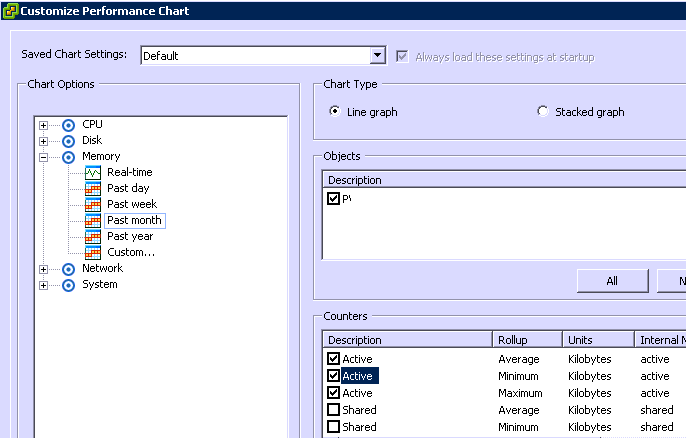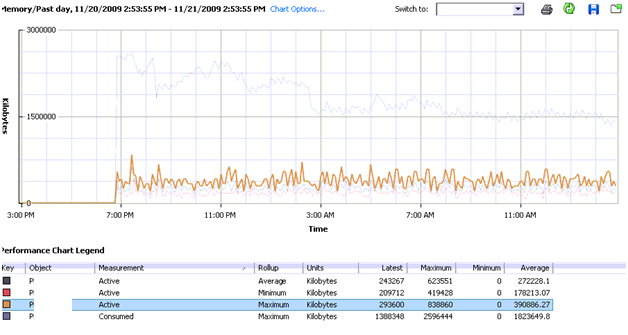I'm reposting Adrian Costea's Blog on "Installing VMware vCenter 5.1 on Windows Server 2008 R2". I've ran through this install myself a couple times but it's always good to share the knowledge and not to mention "screen shots" on how to actually perform it. My environments don't allow me to take screen shots...so here you go! Thanks Adrian!
VMware released the new version of vCenter server which is 5.1, with
new improvements and features. I’m not going to write them here to bore
you, but if you want to read about what’s new you can
read this paper.
The vCenter server 5.1 installation in this article will use a remote
SQL server for the database; installing it using the SQL server Express
that comes with the package is just too easy, and maybe you have a large
environment so a dedicated SQL server works the best. The installation
steps are a bit different compared to the
installation of VMware vCenter 5.0 because of the
vCenter Single Sign On feature.
Minimum requirements for the vCenter server:
Processor: Intel or AMD x86 processor with two or more logical cores, each with a speed of at least 2GHz.
Memory: 4GB RAM. RAM requirements may be higher if your database runs on the same machine.
Disk storage: 4GB. Disk requirements may be higher if the vCenter Server database runs on the same machine.
Database: Microsoft SQL Server Express for small deployments 5 hosts/50 VMs. Not important for this scenario.
Supported operating systems:
Microsoft Windows Server 2003 Standard, Enterprise or Datacenter SP2 (required) 64bit
Microsoft Windows Server 2003 Standard, Enterprise or Datacenter R2 SP2 (required) 64bit
Microsoft Windows Server 2008 Standard, Enterprise or Datacenter SP2 64bit
Microsoft Windows Server 2008 Standard, Enterprise or Datacenter R2 64bit
For a full list of prerequisites please read
this VMware KB.
Before
the actual VMware vCenter server installation begins we need to create
and configure the databases and users on our SQL server. Let’s start
with the vCenter database. Right-click
Databases on your SQL server and choose
New Database.
Type a name for the database in the
Database name box then go to the
Options page.
Here select
Simple on the
Recovery model drop-down box. Click
OK to create the database.
Since
we are not going to use Windows authentication a SQL login needs to be
created to be able to connect to the database, later on. Right-click
Logins and choose
New Login.
Here we have a few settings to change. First type a name for the login. Now select
SQL Server authentication, type a password, then remove the check from the
Enforce password policy box. On the
Default database drop-down box select the database we created a few moments ago. Don’t click
OK just yet.
Go to the
User Mapping page and check the boxes next to
msdb and
VMware_vCenter_51 (this is the database we just created). Now on the
Default Schema column some buttons appeared. Click the button from the
msdb database, go to
Browse and from the list select the
dbo object. Do this for the other database too. On the
Default role member ship section select
db_owner for both databases. Click
OK.


Make sure the
SQL Server agent is started and configured to start automatically.
Now
that our vCenter server database and login are created, is time to take
care of the VMware Single Sign On (SSO) database and logins too. For
this we are going to use some scripts from the VMware vCenter
Infrastructure 5.1 DVD/ISO. Mount the ISO on the SQL server and browse
to
Single Sign On\DBScripts\SSOServer\schema\mssql. What we are interested in here are the
rsaIMSLiteMSSQLSetupTablespaces.sql and
rsaIMSLiteMSSQLSetupUsers.sql SQL queries files.
Double
click the first one to open the query in SQL server so we can modify it
to our needs and eventually execute it. You need to have the SQL
Management Studio already opened and connected to the SQL instance for
this to work. As you can see this script will create a database with the
name
RSA; we need to modify that for a production
environment, is just not a great name. Then we need to type a path
location for the database files and replace
CHANGE ME.


I’m going to call the SSO database
vCenter_SSO and put the database and log files on a separate partition (
E:\vCenterDB). Just replace where you see RSA on the script with
vCenter_SSO (if this is the name you want for the database). When your done modifying the script click the
Execute button.
The database should be now created and present under the
Databases folder.


Now we need to create some logins for this database, and we are going to use the
rsaIMSLiteMSSQLSetupUsers.sql
query file for this. Here I will modify the names of the logins,
because I just don’t like the RSA names, put the correct database name
in the script, and provide passwords for the two logins. At the end of
the
CREATE LOGIN line, I will type
CHECK_POLICY = OFF so the password policy will not be enforced and have to use a strong password. When your done click
Execute.
And voilà, the users were created successfully.
Before we log off from this server, verify that SQL server authentication is enabled. Right-click the server name, choose
Properties and on the
Security page the
SQL Server and Windows Authentication mode option should be selected. Restart the SQL server service for the change to take effect.


Wow…
now those were a lot of steps for just two databases, but we are done
now on the SQL server. Let’s move on to the vCenter server, well…the
future vCenter server. Since we are using a remote SQL server a System
DSN needs to be created on the machine where VMware vCenter will run,
but before that the correct SQL driver needs to be installed on this
machine. Mount the SQL server ISO, if you are in a virtual environment
or put the DVD and launch the wizard. You need to mount the same version
of SQL server that you are using for the vCenter server database.
If you don’t have .NET Framework installed, just hit the
OK button so the wizard will install it automatically.
Go to the
Installation menu on the screen and click the
New installation or add features to an existing installation link.
The wizard will check the environment and if everything looks good you can click the
OK button to continue.
Type the product key and click
Next.

Accept the
EULA and continue the wizard.
Hit the
Install
button to install the setup support files. These files are needed for
the SQL installation, and without them you can’t continue.
A
software compatibility check is performed before moving forward. If
everything looks good and no errors are presented click the
Next button to continue.
Make sure
SQL Server Feature Installation button is selected and click
Next.
All we need to select here is
Management Tools – Basic.
Follow to wizard ’till the end using the default settings. Click the
Install button to install those SQL Management tools.


Now that we have the correct SQL driver present on the system is time to create the System DSN. From
Administrative Tools, open
Data Sources (ODBC). Go to the
System DSN tab and click the
Add button.
Select
SQL Server Native Client 10.0 and click
Finish.
On the new wizard, in the
Name box type a name for this System DSN. On the
Server box type the SQL server name; this is the server we used earlier to create those databases and logins. Click
Next when your done.
Since
I’ve said earlier that we are not going to use Integrated Windows
authentication for the vCenter database, select the second option here
With SQL Server authentication using a login ID and password entered by the user. Type the user and password for the connection,
VMware-vCenter_USER for this example.
The correct database should be selected automatically for this user. If not check the
Change to default database to box and select the vCenter database from the list.
Leave the defaults here and click
Finish.
On the window that pops-up click the
Test Data Source button to verify the connection. If passed, click
OK and
OK again on the
ODBC Data Source Administrator window.
At
last, is time for us to install the vCenter server and the vCenter
components. You can install vCenter components (SSO, Inventory Service,
vCenter Server) on different machines if you want to, or if the load is
heavy for a single machine to handle it. If you go this way you need to
install the SSO first, then the Inventory service and the last one is
the vCenter server. However, for the sake of this example I’m going to
install all the components on a single server, so select
VMware vCenter Simple Install from the menu and hit the
Install button.
As you can see the SSO wizard is the first one that pops-up for installation. Click
Next twice to skip the
Welcome screen and the
End User Patent Agreement screen.


Accept the
EULA and continue.
Provide
a strong password for the SSO administrator that the wizard will
create. Do not forget this password because you might need it sometime
to manage the SSO domain.
Since we prepared for a connection with a remote SQL database, select the second option
Use an existing supported database.
The database type is
Mssql since we are using Microsoft SQL server. For the database name type
vCenter_SSO, because this is the database we created for the SSO service. On the
Host name or IP address box type the name of your SQL server and leave the port as it is. Check the box next to
Use manually created DB users
and in the bellow boxes type the username and their credentials we
created on the SQL server (VMwareSSO_DBA, VMwareSSO_USER). Click
Next.
You might get the error message “
Database connection has failed. You can refer to the vm-sso-javaLib.log in the system temporary folder for more information“. To solve this log on to your SQL server and reset the accounts password for
VMwareSSO_DBA and
VMwareSSO_USER. Just right-click the login account select
Properties and in the
Password and
Confirm Password boxes type the password again and click
OK.


If your DNS infrastructure is working great then leave the FQDN that the wizard provides as it is and continue the wizard.
You can go with the default option here, or you can provide a service account for the
Security Support Provider Interface. Me personally, I don’t like to have services running as local accounts, so I’ve created a domain account for this in AD.
Leave the default path here for the installation and continue.
Again, go with the defaults here and click
Next.
Click
Install
to proceed with the VMware SSO service installation. As soon as is
done, the wizard for the Inventory service automatically pops-up and
starts installing the service.


The
first screen for the vCenter wizard is the license screen. You can type
your product key now, or continue with the installation and provide it
later on.
Select
Use an existing supported database and choose the System DNS we created earlier.
Provide the password for the user so the wizard can connect to the database.
I
told you I don’t like to use local accounts for the services to run.
The vCenter server will run under a domain service account.
Leave the default ports here and click
Next.
You
need to specify how many VMs and ESXi hosts you will have so the wizard
can optimize the deployment. The bigger the infrastructure the more RAM
the Web services needs.
At the
Ready to install the program page click the
Install button to start installing the vCenter server.
At the end click the
Finish button to close the wizard. We are done with the vCenter server installation.


If you want to verify that it works, and I bet you want, install the client and connect to the vCenter server.


Looks like it works, and all this was a success.












































































